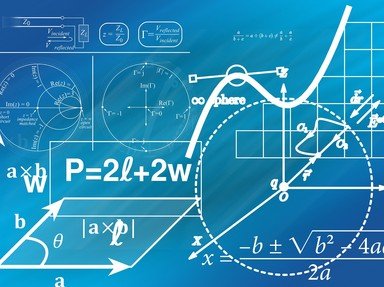Quiz Answer Key and Fun Facts
1. Let's say a journey from place A to B takes 5 hours. If a person starts his trip at A at 8 am, when (state the answer in the 12-hour system) will he arrive at B? To answer the question, one performs the operation 8 + 5 = 13, followed by 13 - 12 = 1 to get the answer 1 pm. Keeping this example in mind, what is the other name for modular arithmetic?
2. Two great mathematicians who have contributed greatly in the field of modular arithmetic are Swiss physicist Leonhard Euler and German child prodigy Carl Friedrich Gauss. They discussed the idea of congruence in great detail. Two integers are congruent modulo n if they yield the same remainder when divided by n. Which of the following pairs is congruent modulo 5?
3. Unlike normal arithmetic that involves the operations of virtually any type of numbers, modular arithmetic only works with a specific group of numbers. In the field of real analysis, this set of numbers is denoted by the capital letter Z. Some examples of the numbers included in this group are -3, -2, -1, 0, 1, 2, and 3. What is the name given to this group of numbers?
4. When performing modular arithmetic using modulo 3, all the integers are expressed in only three distinct numbers, namely 0, 1, and 2. In mathematical terminology, these numbers are called the residue classes modulo 3. On the other hand, if modulo 5 is used instead, the residue classes would include the numbers 0, 1, 2, 3, and 4. In general, what are the numbers in the residue classes modulo n, given that n is a positive integer greater than 1?
5. The concept of modular arithmetic is similar to that of the remainder obtained while performing the division operation. In computer science, there are two different symbols used to compute the remainder, depending on the programming language used. One of them is through the use of the alphanumeric operator symbol "mod", which is short for modulo. What is the other symbol used to perform the same operation? (Hint: You normally see this sign on your test papers.)
6. A common application of modular arithmetic is in determining the day of the week of any given date, provided that the day of the 1st January is known. Let's consider a non-leap year, and if the 1st January is a Monday, then, using modular arithmetic, one can know that the last day of the year, 31st December, falls on a Monday, because 365 and 1 are congruent modulo 7, or, 365 - 7*52 = 1. Now, let's consider a leap year. If the 1st January falls on a Monday, what day would it be on the 29th February (day 60)?
7. Consider the following mathematical problem: Find the last two digits (tens and units digits) of 7^2012. One might proceed by listing down the first few numbers: 7^1 = 7, 7^2 = 49, 7^3 = 343, 7^4 = 2401, 7^5 = 16807, 7^6 = 117649, and so on. A pattern can be observed for the last two digits of the answers. Which modular arithmetic should one use in the computation to get the answer of the question, which is 1?
8. Modular arithmetic has found a wide range of applications in many different fields. It is used to verify whether a given string of number keyed in by users is valid or not. Computers that are able to perform modular arithmetic of different specified values have been developed and used to process all but one of the following codes. Which is the exception?
9. When a number is divided by 2, 3, and 5, the remainders are 1, 2, and 4, respectively. What is the smallest possible value of the number? In theory, one could examine all the possible numbers one by one but that would be too time-consuming. A smarter way is to use a theorem that relies on modular arithmetic, and one can get the answer 29 very quickly. The theorem originated from an ancient poem in the book "Sun Tzu Suan Jing". What is the name of the theorem?
10. A famous and useful theorem that is used widely in the field of number theory employs the concept of modular arithmetic. It states that for any integer x and prime number p, the two numbers x^p and x are congruent modulo p. For example, 3^2 = 9 and 3 are congruent modulo 2. The theorem was named after a French mathematician who was known for his last theorem. What is the theorem being described?
Source: Author
Matthew_07
This quiz was reviewed by FunTrivia editor
WesleyCrusher before going online.
Any errors found in FunTrivia content are routinely corrected through our feedback system.

